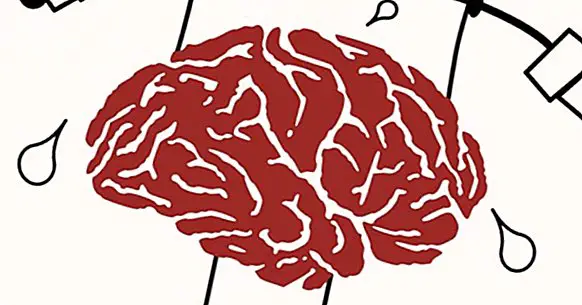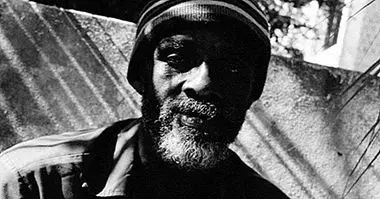Cognitive restructuring: how is this therapeutic strategy?
Cognitive restructuring is one of those concepts that, through the practice of psychotherapy, have become part of the main pillars of the cognitivist current, the dominant paradigm in current psychology. Since the psychologist Albert Ellis established its foundations in the mid-twentieth century, this resource has become one of the great pillars of psychological intervention based on the cognitivist paradigm, the dominant one today.
In this article we will see what exactly is the cognitive restructuring and in what way it helps to map the logic that psychotherapy has to follow. But, to answer this question we must first understand what cognitive schemes are.
- Related article: "The 10 most used cognitive-behavioral techniques"
The concept of cognitive scheme
When it comes to understanding the complexity of the human mind, most psychologists use a concept known as a cognitive schema. A cognitive scheme is a set of beliefs, concepts and "mental images" that, through their way of relating to each other, create a system that shapes our way of interpreting reality and makes us more likely to act in a way that other.
Thus, the cognitive schemes on which the idea of cognitive restructuring is based are basically the structure of our mentality , the way in which we have learned to give shape to what we think and say, and to what leads us to behave as we normally do by our own will.
Keep in mind, however, that a cognitive schema is a useful representation of what really happens in our brains. As a representation that is, does not accurately capture the functioning of human thought , but simplifies it so that we can make hypotheses and predictions about how we act and how we interpret things.
In reality, in mental processes the content of our thoughts is not something separate from the neuronal "circuits" through which they pass, which means that the concept of cognitive scheme does not perfectly capture the dynamic and changing nature of our brain.
- Related article: "Cognitive schemes: how is our thinking organized?"
Cognitive restructuring: a definition
As we have seen, the mental processes, although they have a certain stability (if not, we could not speak of personality or cognitive schemes), it is also very changeable and malleable. Cognitive restructuring takes advantage of this duality to offer a useful psychological intervention strategy for cognitive-behavioral therapies .
In particular, what is proposed is that, through cognitive restructuring, we are able to modify our way of thinking and interpreting things in favor of the objective established in therapy. Many times, many of the problems that patients have in psychotherapy consultations have to do with the impossibility of seeking alternative explanations about what is happening, while the ideas from which they start lead to a cul-de-sac of anxiety, sadness, etc.
Thus, cognitive restructuring can be defined as a strategy used to improve the chances of psychotherapy patients modify their cognitive schemes in the most adaptive way possible . That is to say, it helps us not to be mere receivers of environmental influences, but rather to be able to mold our mentality and our habits in a way that makes us happy and allows us to live better.
- Perhaps you are interested: "Behavioral Cognitive Therapy: what is it and on what principles is it based?"
Mental flexibility is not something new
Maybe for some people the idea of changing the structural aspects of our way of thinking for the sake of our happiness sounds too good to be true. The belief that, past childhood and adolescence, individuals do not change has spread a lot. However, even if we do not realize it, there are many situations that prove otherwise.
Even outside the framework of psychotherapy and cognitive restructuring, there are contexts in which we are able to act in a way that does not define us. In fact, even if it does not look like it, our mentality is constantly changing : the simple fact of being in certain contexts and not in others can cause us to have opinions and beliefs very different from those that would normally define us, in a matter of minutes.
For example, social pressure can lead us to perform acts that we would never have said we would be able to carry out, as the different repetitions of the Milgram experiment demonstrate.In the same way, the existence of sects based on fundamentalism shows us that all kinds of people are capable of setting aside their family to devote all their efforts to make their religious community prosper.
In these cases not only do people's actions change: also their thoughts, which they become relatively coherent with what is done , at least for a while.
In short, although sometimes we have the feeling that within the heads of people there is a way of thinking that is totally stable and that shows us the essence of that individual in particular, this is an illusion. What happens is that normally people try not to expose themselves to situations that lead them to face their fundamental beliefs , with which these changes in the cognitive schemes tend to be slow and go unnoticed.
- Related article: "Types of psychological therapies"
The difficult part of psychotherapy sessions
As we have seen, in special situations our actions may not correspond to the type of ideas and beliefs that we would say that define us. The challenge is, however, to make these changes relatively stable and permanent instead of appearing only when we are in that particular type of situation, and in make them point towards the objectives pursued with the therapy , and not in any of the others.
Cognitive restructuring is just that, an effort to make our mental processes take different channels than usual, and all in a targeted manner, without letting chance determine what kind of changes are going to take place in attitudes and beliefs of people.
On the other hand, we must also be clear that cognitive restructuring must be framed in a program in which we seek to change not only beliefs, the "theory" of what a person believes. We must also modify the practice, which the person does in their day to day. In fact, if something shows us the reality, as we have seen, it is that ideas and beliefs do not arise spontaneously in our head , but they are part of our dynamics of interactions with the environment, the situations through which we pass. Our actions modify our environment as much as our environment modifies the mental processes that guide them.



















